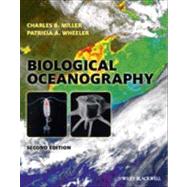
Note: Supplemental materials are not guaranteed with Rental or Used book purchases.
Purchase Benefits
What is included with this book?
Patricia Wheeler, now Emeritus Distinguished Professor of Oceanic and Atmospheric Sciences at Oregon State University, taught biological oceanography and phytoplankton physiology there for many years. Her research contributions address phytoplankton nutrient dynamics and include work on dissolved organic carbon and nitrogen. She conducted field work in the Equatorial Pacific, the northern California Current system and the Arctic Ocean.
Acknowledgements viii
1 Ocean ecology: some fundamental aspects 1
2 The phycology of phytoplankton 19
3 Habitat determinants of primary production in the sea 49
4 Numerical models: the standard form of theory in pelagic ecology 73
5 A sea of microbes: archaea, bacteria, protists, and viruses in the marine pelagial 96
6 The zoology of zooplankton 115
7 Production ecology of marine zooplankton 130
8 Population biology of zooplankton 158
9 Pelagic food webs 181
10 Biogeography of pelagic habitats 202
11 Biome and province analysis of the oceans 230
12 Adaptive complexes of meso- and bathypelagic organisms 276
13 The fauna of deep-sea sediments 292
14 Some benthic community ecology 321
Biological oceanography
15 Submarine hydrothermal vents 351
16 Ocean ecology and global climate change 367
17 Fisheries oceanography 396
References 427
Index
Colour plates appear between pages 230 and 231
The New copy of this book will include any supplemental materials advertised. Please check the title of the book to determine if it should include any access cards, study guides, lab manuals, CDs, etc.
The Used, Rental and eBook copies of this book are not guaranteed to include any supplemental materials. Typically, only the book itself is included. This is true even if the title states it includes any access cards, study guides, lab manuals, CDs, etc.